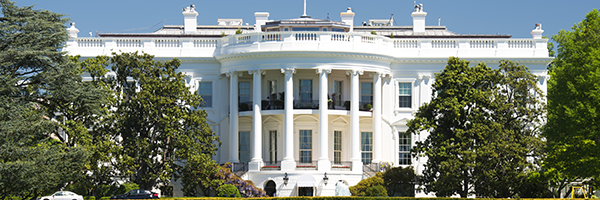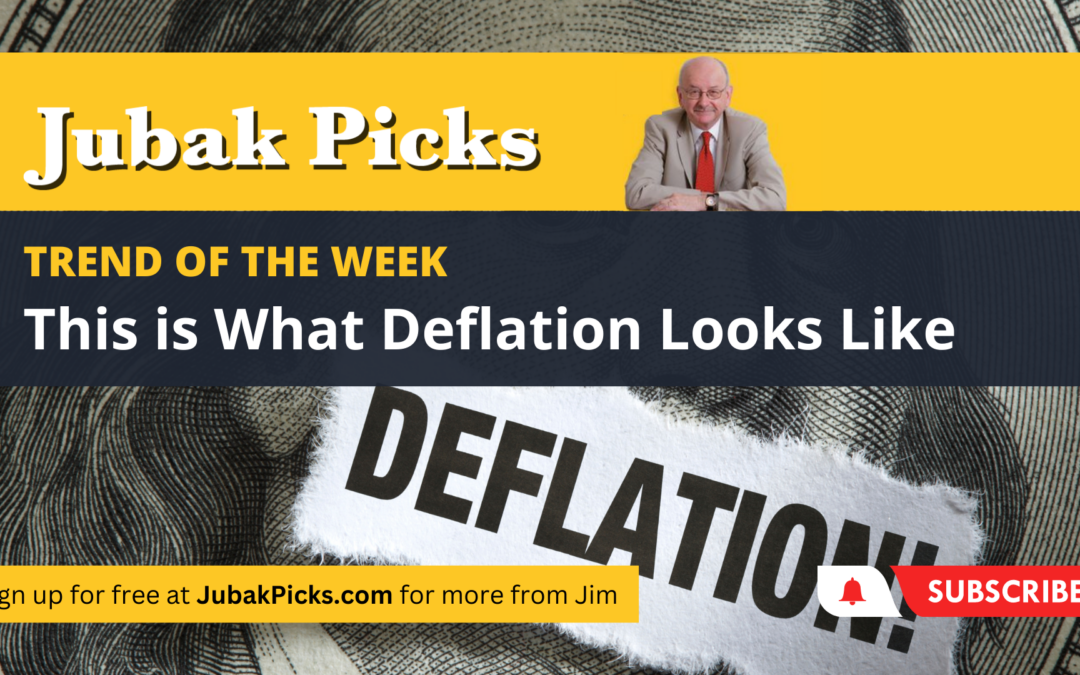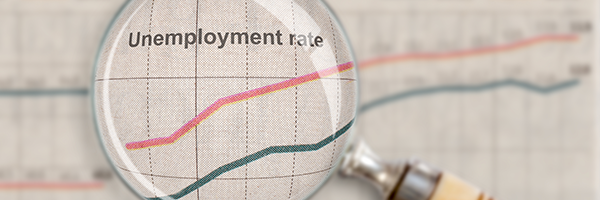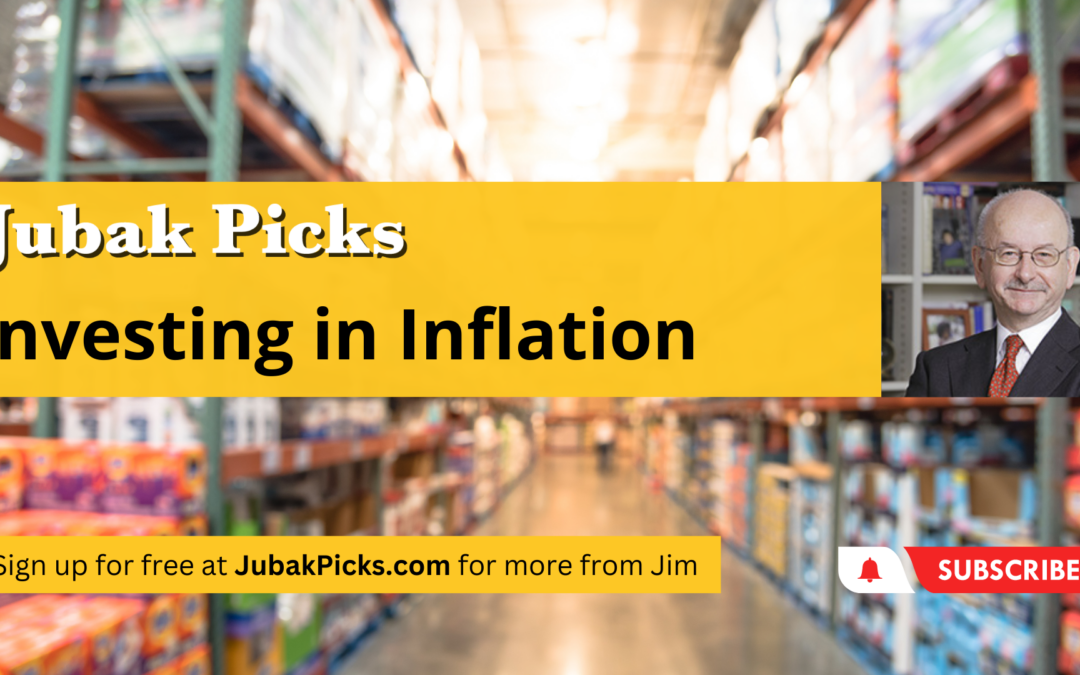 April 19, 2025
April 19, 2025
What You Need to Know Today:
Wall Street sees gold going higher on rising buying from global central banks
Today Goldman Sachs Group raised its year-end target for gold to $3,100 an ounce. Central banks are buying gold at a faster than expected pace and flows into gold ETFs are accelerating.

Special Report: Buys and sells–and other money moves for Trump’s first 100 days. The complete 100 Days
What you need as an investor and what your portfolio needs is a road map to the likely events of the beginning of this new administration. And a take on what those events are likely to mean for the financial markets–and the prices of stocks and bonds. And recommendations on what moves to make to respond to the events of the first 100 days of a Trump Administration. Which is what this Special Report is all about. Here /i’ll give you an investor’s calendar to the first 100 days of Trump; a run-down of the likely effects on the financial markets of the events in the first 100 days; and recommendations for moves that you should make with your portfolio.

Saturday Night Quarterback says, For the week ahead expect
When the Federal Reserve announces its latest interest rate move and it’s Dot Plot projections on future interest rates, inflation, and GDP growth, it will be the Dot Plot projections that matter to the financial markets.

CPI inflation creeps higher in November
Inflation remains stubborn. The Consumer Price Index (CPI) rose at a 2.7% annual rate in November, according to Labor Department data released Wednesday. That was hotter than a 2.6% rise in October. But that matched economists forecasts. It was also above September’s 2.4% annual rate. On a monthly basis, inflation increased 0.3% from October to November, the biggest gain since April. Prices for housing, energy, and particularly food all rose.
CPI core inflation, prices excluding volatile food and energy categories, rose another 0.3% for the fourth straight month. The are rate was up 3.3% for the year. For the past six months, core inflation has been stuck at an elevated level above the Fed’s target of 2%.

I’m adding LNG to my Jubak Picks Portfolio
On Monday, December 9, I added Cheniere Energy (LNG) to my Special Report “10 New Stock Ideas for an Old Rally” and added it to my Jubak Picks Portfolio. Here’s what I wrote then:

Watch my new YouTube video: Quick Pick LNG
Today’s Quick Pick is Cheniere Energy, (LNG). Cheniere liquifies natural gas and sells it globally. The stock is up about 32% YTD. The company is about to put seven more units of natural gas production on line, and it looks like they’ll be selling and distributing that gas, as scheduled, by the end of the year. This will mean more revenue from an actual plant producing more LNG, not the idea or a theory that more gas will maybe be put out soon. The incoming Trump Administration will be light on regulation for natural gas and there is rising demand from data centers looking to guarantee their own energy needs. I already own the stock but if I didn’t I’d certainly be adding it to my portfolio right now.

Special Report: 10 Great Growth Stocks that Are Getting Greater–My first 8 picks
Here are the first 8 picks for my GREATER Growth Stocks Special Report. More on the way.
Live Market Report (20 minute delay)

Danaher continues its post-Covid reset–now is the time to buy future growth
The comparisons with 2022 continue to hurt shares of Danaher (DHR). For the second quarter, reported yesterday, the company saw revenue down 8% and adjusted earnings per share off 26% year over year. The culprit is easy to see. But I continue to hold Danaher in my Jubak Picks Portfolio where the position, initiated on June 20, 2017, was up 198.3% as of the close on July 25. Tomorrow July 26, I’ll be adding these shares to my long-term 50 Stocks portfolio. Danaher is one way to play the growth of the drug sector and the need of these companies for pure water.

Please Watch My New YouTube Video: Trend of the Week This is What Deflation Looks Like
Today’s Trend of the Week is This is What Deflation Looks Like. Last week, Ford announced it’s cutting the price of the Ford F-150 electric truck, the F-150 Lightning, by nearly $10,000. The prices had gone up when supplies were low, but now, Ford says that they’ve cut production costs, so they’re able to cut prices. Maybe. That’s one explanation anyway. But, the news came as Tesla’s long-awaited truck appears to be finally hitting the market (sometime this year.) There is an over-supply of electric vehicles in general as more and more car makers have pivoted to the EV, and the sector hasn’t grown as fast as the production. In order to keep market share in a young-fast growing industry, companies, like Ford, will cut prices. This is as an early sign of a potential deflationary period. The timing of a transition from an inflationary environment to a deflationary environment will depend largely on global climate change. A lot of money will have to be spent on building, or rebuilding infrastructure, which could stress supply, putting the brakes on deflation. Keep an eye out for my special report called, Investing in Global Climate Catastrophe for more on inflation, deflation and interest rates. For now, the Ford announcement gives us the first hint of deflation in a critical sector of the global economy.

Saturday Night Quarterback (on a Monday) says, For the week ahead expect…
Ho, hum, it’s a quiet week with nothing much going on. Oh, except for the meeting the Federal Reserve’s interest-rate setting Open Market Committee on Wednesday, July 26. Oh, and earnings from Microsoft (MSFT) and Alphabet (GOOG) on July 25, and Meta Platform (META aka Facebook) on July 26. Apple (AAPL) and Amazon (AMZN report on August 3.

Please Watch My New YouTube Video: Quick Pick Iron Mountain
Today’s Quick Pick is Iron Mountain (IRM). Iron Mountain has been around since the 1950s. It started off as a corporate document storage repository and has gradually moved into shredding, security and digitalization (they digitize and store important documents) and a full cloud storage and management offering. The company has 93 million square feet of storage around the world in 56 countries. It acquired about 29 companies in the last three years as the company looks to consolidate a still rather fragmented industry. It has had an average 5.6% revenue growth over the last three years. Morningstar calculates the shares trade at a 3% discount, with a PE of 31, and they pay a 4.2% dividend. I think Iron Mountain is riding a number of o-gern The long-term trends that include corporate and cyber security, as well as the need for document backup in a age of climate change. I’ll be adding this to my JubakPicks and Dividend portfolios on Monday, July 24..

Tesla drops today on earnings–it’s all about falling margins
Tesla (TSLA) delivered a big beat over Wall Street estimates when the company reported second quarter earnings after the close yesterday. The company reported earnings of 91 cents a share, well above the Wall Street projection of 80 cents a share. But in after hours trading, the stock still fell by 4.20%. Today, July 20, the shares are down 7.17% as of 10:45 a.m. New York time. And this comes despite another record quarter of unit sales. The problem?

Please Watch My New YouTube Video: Earnings It’s All About Surprise
Today’s video is Earnings: It’s All About Surprise. Good news is good, but it doesn’t necessarily move markets. On Friday, July 14, JPMorgan Chase came out with a stellar earnings report–but other stocks in the sector moved down on a belief that these banks wouldn’t match JPMorgans good news. However, SURPRISE! On July 18, Bank of America came out with a very good earnings report, and the stock popped by 4.2%. Bank of America surprised the market with a big bump from its Wall Street trading operations. On the surprise, Bank of America actually moved the entire banking index up 2.29%. On the negative side, regional bank PNC Bank surprised negatively with a cut to its full year guidance from 6-8% to 5-6%, and the stock, of course, fell. (Early in the day although it recovered by the close.) Keep all this in mind as we head into earnings season for technology companies, where expectations are often very high. Apple is one of the first to report and will set the tone for the second quarter which is typically a weaker quarter in the technology sector.T

Please Watch My New YouTube Video: Trend of the Week Consumers are Skipping Essentials
Today’s Trend of the Week is Consumers are Skipping Essentials. The impact of high inflation has consumers moving down the price point ladder, and we’re now seeing people skip purchases for essentials. Unit purchases for essentials like toothpaste, laundry detergent and toilet paper are falling. It’s only inflation that keeps retail sales in dollars from dipping. From an investing perspective, this means there isn’t anywhere to hide. Target, which is a relatively inexpensive retailer, is reporting negative growth. Walmart and Costco are still positive, but that could change if this trend continues. In May, inflation adjusted household spending stalled and was essentially flat. Unit sales are down 3% to 4% in the 52 weeks through June 24. This is a sure sign that consumers are cutting back on spending. This all before consumer incomes take a hit with the resumption of college loan payments in October. My advice: be careful out there.

Please Watch My New YouTube Video: Quick Pick Nvidia Hold Through Earnings on August 23
Today’s Quick Pick is Nvidia (NVDA)–Hold Through Earnings on August 23. Nvidia reports late in this quarter’s earnings season, and this report is expected to be very good. Wall Street’s expectations range from a low of 75 cents a share to a high of $1.75 but the consensus is $1.66 a share, up from 32 cents last year. Nvidia has been reporting 30% positive surprises in recent quarters, so there’s a good chance the results may be even better than expected. My suggestion is to hold the stock through this report in August, and then think about selling. I know, I know. Sell Nvidia!? That’s crazy! Here’s the thing. At some point, Nvidia’s growth rate is going to start to slow. When it does, people will look at the stock and decide the slower growth rate may not

Please Watch My New YouTube Video: Remember the Quiet Period
Today’s video is Remember the Quiet Period. Don’t panic. There have been a lot of announcements coming from the Fed recently but it’s not because there’s a new crisis or a huge event brewing. It’s simply that the window of time when the Fed can speak is about to close. The Fed has to go quiet twelve days before the July meeting, so right now, they’re trying to make it very clear to the market that a 25 basis point raise is likely in July. On Monday, three Fed officials, Michael Barr, Mary Daly and Loretta Mester discussed the need for another rate hike–possibly two. We’ll be entering the Fed’s quiet period on Saturday, July 15. Looking at the CME FedWatch, on July 11, the market believed there was a 92.4% chance we’ll get a rate hike on July 26. On the same date, the market thought the odds were only at 22.2% for a 25 basis point increase at the meeting on September 20. It sounds like the Fed has made their intentions clear for the July 26 meeting, and the market won’t be shocked by a rate hike on that date. September 20? Hmmm.

Yesterday’s CPI inflation report created a huge dilemma for the Federal Reserve (and your portfolio)–here’s what to watch
Yesterday, the Bureau of Labor Statistics reported that all-items inflation rose at just a 3% annual rate in June. That was a huge drop from the 4% annual rate reported in May. The inflation numbers immediately prompted Wall Street to, again, declare that the Federal Reserve’s cycle of interest rate increases would end “soon.” “Soon” is now defined as after the Fed’s July 26 meeting. Fed officials have been so adamant in recent days about the need for more interest rate increases that the odds of 25 basis point increase at the July 26 meeting barely budged after the June CPI report. Today the CME FedWatch Took, which calculates the odds of a Fed move by looking at prices in the Fed Funds Futures market (and is, thus, a measure of investor sentiment rather than speculation on Fed thinking) puts the odds of a July 26 25 basis point increase at 92.4%. That’s down only slightly from the 94.2% odds before the CPI inflation report. The big move has been in the odds for a second 25 basis point increase at the Fed’s September 20 meeting. Today, the odds are just 11.1%. That’s down from 13.2% odds of a 25 basis point move in September on July 12. And down big from 27.5% odds of another interest rate increase in September on July 6. And there’s the Fed’s problem.

Special Report: Finding the Next Nvidia: My 10 Picks–Pick #2 ESS Technology
Two keys to finding a stock capable of racking up Noida-like gains over the long term: Finding a cheap entry point. And finding a stock from a company with a fast-growing (over the long term) addressable market. (Just as a refresher Nvidia (NVDA) shares are up an average of 61% a year over the last 10 years.) My second pick to meet this challenge: ESS Technology (GWH)

Consumers finally start to buckle; time to sell Procter & Gamble
U.S. consumers are reducing spending on staples such as toothpaste, laundry detergent, and toilet paper. The bad news for investors is that consumer staples stocks, seen as a safe haven as the economy slows and inflation continues above 3%, aren’t a safe as assumed in so many portfolios.

Please Watch My New YouTube Video: Trend of the Week India is the Next China
Today’s Trend of the Week is India is the New China–in investing terms. Companies are looking to India for better prices and as a means of side-stepping the China and U.S. technology trade wars. For example, Apple is openly looking for suppliers in India, or asking suppliers to move from China to India, and other companies are following the path as well. Moody’s forecasts India’s GDP growth at 6% to 6.3% this year. I have two suggestions to get in on this trend. The first is the iShares MSCI India ETF, (INDA), which is up 5% year to date, but up 10-11% in the last three months. The other option is HDFC Bank, (HDB), much more volatile that the ETF, but also up 5% year to date and up 8% in the last three months. HDFC Bank is the biggest credit card issuer in India, with 28-29% market share. As wealth in India grows, more and more consumers are getting credit cards for the first time. HDFC also offers alternative platforms and payment technology that will also let the bank ride the technology wave in India’s financial sector. I don’t feel overly enthusiastic about investing in India as a whole. The country has an incredible, increasing reliance on coal, and the economy is riddled with special deals that favor family-run conglomerates with ties to the government. Buying the whole Megillah makes me a little leery, but I like INDA and HDB to get in on sentiment that sees India as the new China for investments.

China nears deflation–and it doesn’t look like the standard policies will work
China’s consumer inflation rate was flat in June with the consumer price index unchanged year over year, according to data release by the National Bureau of Statistics today. That was the lower inflation rate since February 2021 when slumping pork prices dragged the index into deflationary territory. Aside from that brief period of deflation, China hasn’t experienced prolonged consumer price deflation since 2009 during the global financial crisis. The fall in what are called factory-gate prices, the equivalent of producer prices in the United States, says there aren’t inflationary pressures ready to ride to the rescue. Producer prices fell 5.4% from a year earlier, the deepest pace since December 2015. Core inflation, which excludes volatile food and energy costs, slowed to a year-over-yrar rate of 0.4% from 0.6%. The problem is falling consumer demand

Saturday Night Quarterback (on a Sunday) says, For the week ahead expect…
Look for big news on inflation and earnings this week. But I think the news is baked into stock prices so I don’t expect much of a move on the news.

Solar cell breakthrough as 30% efficiency barrier falls
This breakthrough in solar power isn’t enough to stop global warming by itself, but it sure is enough to upend the entire energy sector within the next five years. Multiple research groups (and “multiple’ is important here because it means there’s more likelihood that the lab results will hold up to scrutiny. Two groups published the details of their efficiency breakthroughs in the journal Science on Thursday, and at least two others are known to have pushed well beyond 30%.) have reported a breakthrough that will push the efficiency with which solar cells convert sunlight to electricity through the 30% level that has been thought to mark the maximum conversion of sunlight to electricity.

No jobs follow through on yesterday’s huge jump in June ADP survey, but enough wage pressure to keep the Fed on track for a July 26 interest rate increase
Total nonfarm employment rose in June by 209,000, the Bureau of Labor Statistics reported this morning. That was above the 200,000 projected by economists. But way below the 497,000 jobs added in June according to the ADP Research Institute in its report yesterday. The result is a mild uptick in stocks as of 2 p.m. today with the Standard & Poor’s 500 up 0.46%, the Dow Jones Industrial Average ahead 0.16%, and the NASDAQ Composite higher by 0.73%. Why not a stronger response?

Exxon Mobil guides to huge drop in earnings; just one example of revenue and earnings problems across the sector
On Wednesday, July 5, Exxon Mobil (XOM) told investors that second quarter earnings could drop by 50% from earnings in the second quarter of 2022. On Thursday, July 6, shares of Exxon Mobil closed down 3.73%. Remember, we’re talking about Exxon Mobil here, one gigantic oil company. So while earnings could fall by half in the quarter, the company is still looking at quarterly earnings of $6.2 billion. Exxon’s news has implications across the energy sector.

Please Watch My New YouTube Video: Investing in Inflation
Today’s video is Investing in Inflation. I went shopping at Costco and Target on the Saturday before July 4 and didn’t buy anything at either store.But for two very different reasons. Costco was mobbed with lines longer than I’ve ever seen and Target was nearly empty, as were many of its shelves. While Target does sell some groceries, it’s not a destination for bargain-hungry food shoppers that Costco is. Headline inflation–or “all-item” inflation–is down, but core inflation, which includes food, is still at 5.3%. That’s enough price inflation to hurt and consumers are looking to focus on saving pennies and dollars at a store like Costco. A comparison chart of Target and Costco stocks shows a huge divergence in May between the two retailers, with Costco marching steadily up, and Target diving down. I don’t expect core inflation to come down dramatically any time soon, so investing in inflation is a good bet here. Check back tomorrow for a stock play on high core inflation.

Huge surge in ADP jobs for June likely means a big surprise on full June jobs report tomorrow
Earlier this week economists were projecting the official government jobs report due on Friday, that is tomorrow, would show that the U.S. economy added just 200,000 jobs in June. This morning, however, the ADP Research Institute’s survey of private employers showed the economy added 497,000 jobs in June. That’s more than twice the 220,000 gain that economists had projected for this report. And way above the 267,000 jobs reported by this survey in May.



